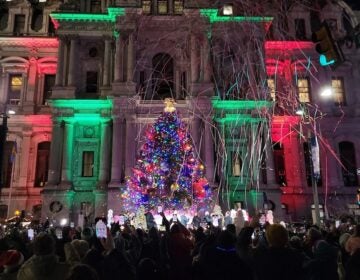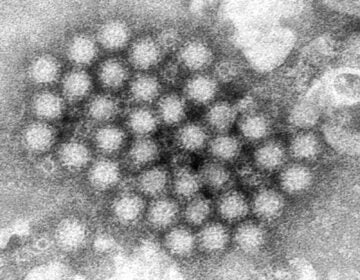New Jersey’s Klan-connected college: Alma White
Listen
A New Jersey church community has come to terms with a dark chapter that made up its first days nearly a century ago.
Zarepath Christian Church is located within a half-square mile enclosed by the Delaware & Raritan Canal State Park and a branch of the Raritan River. Nested in rural Somerset County, it’s hard to imagine this tranquil community’s beginning 91 years ago would be steeped in controversy with the church’s founder, Alma Bridwell White.
It began at the turn of the 20th century. Peter Workman Garretson owned 1,000 acres of farmland in Franklin Township. Garretson married Caroline Van Nest Field and followed his bride into her faith, donating the entire property to Zarepath and its parent organization, the Pillar of Fire.
Harry Smith has been the historian for the Somerset County Historical Society for more than 20 years. According to his genealogical findings, he may be related to the original Garretson family. Saying the Garretson children were greatly upset by their parents’ turnover of the farm, Smith didn’t hesitate to weigh in.
“I think it was a downright dirty thing to do to cut your own offspring out of their inheritance, because you were snookered by someone’s religion,” he said.
The land grant was challenged in court but to no avail, he said.
“Unfortunately, it was legal and there was nothing the kids could do about it because the parents got swept up in that Alma White movement,” Smith said.
Funding from the KKK
In 1921, White started the college that bore her name, and two years later sparked the controversy that the church today adamantly confines to history. In 1923, the Middlesex County chapter of the Ku Klux Klan provided funding to the school in an ironic relationship that spanned nearly 20 years, until White denounced the racist principles of the white supremacist group shortly before she died in 1943.
Alma White College closed in 1978, By 2001, Somerset Christian College was established. Currently known as Pillar College, the school, which has a campus ion Newark, offers Christian instruction.
On a mild mid-Sunday afternoon, at the end of services at Zarepath, pastor Rob Cruver was working the crowd, greeting every person by name. In his early 40s, Cruver is a fit, energetic man clad in black T-shirt and jeans. On a tour of the campus and its well-kept buildings, now mostly unused, he said the church leadership was “duped” by the KKK.
“It was never a formal alliance. It was some of the leaders. And the word ‘duping’ is not a word I use for just our organization, but literally dozens and dozens of organizations, particularly in the North, that understood the klan to be pro-patriotic, pro-temperate, pro-retain things that we identified with in that day,” he said.
Newspapers of the time, such as the New Brunswick Home News, report the Pillar of Fire used klan contributions to publish a newsletter in which the church advocated for many of the KKK’s most intolerant values, and White went on record preaching in support of the klan. Yet, Cruver said, by the early 1940s, White saw the KKK for what it was.
“Alma White, in her writing, was … such a strong Zionist and so open about how God had taken racism out of her heart, and that though we still totally regret and repent of any affiliation with that organization, Alma White didn’t do it for those reasons,” Cruver said. “Our biggest problem is when she realized what the klan was really about … she never formally renounced it. She just kind of dropped it like a hot potato, and that didn’t particularly work well, particularly in the age of the Internet.”
On Internet, past haunts church
Cruver said the Internet makes the association with the KKK a painfully recurring subject, since information is so easy to find online.
“Perhaps it was fine until the Internet age, when everything comes back from the past. And you know you just can’t be silent about it. You have to be vocal. We regret that, we repent that, and it is not who we are,” he said.
The church itself uses the Internet to repudiate the relationship as well. Cruver said he likes to face the problem head on.
“We have membership classes regularly here and I always bring it out … I say, ‘Listen, if you go to Wikipedia and you read anything about this church, somehow, somewhere, you’re going to see something about the KKK,'” he said. “I put it in context … and I say … ‘I want you to know we’ve repented of that, and that anyone who had anything to do with that is long gone.'”
Zarepath is now a “commuter congregation” for its 2,000 members as a result of damage sustained during Hurricane Doria in 1971, Hurricane Floyd in 1999, and Hurricane Irene in 2011. A 7-foot waterline is visible on one of the buildings.
Hurricane Sandy was more merciful but, because Franklin Township wouldn’t allow the church to raise the levees that protect the grounds from flooding, only 12 families remain on campus. Services and church-related activities are held in one of the campus common use buildings. The remaining buildings, including the original chapel, dormitories, stables, and the home once occupied by Alma Bridwell White and her family, are preserved as part of the past.
WHYY is your source for fact-based, in-depth journalism and information. As a nonprofit organization, we rely on financial support from readers like you. Please give today.




